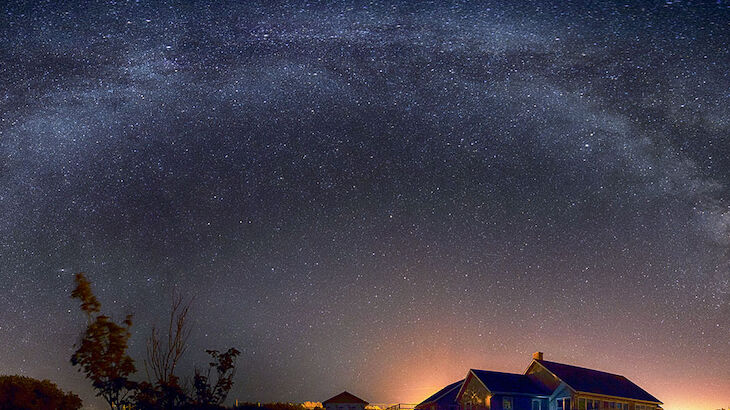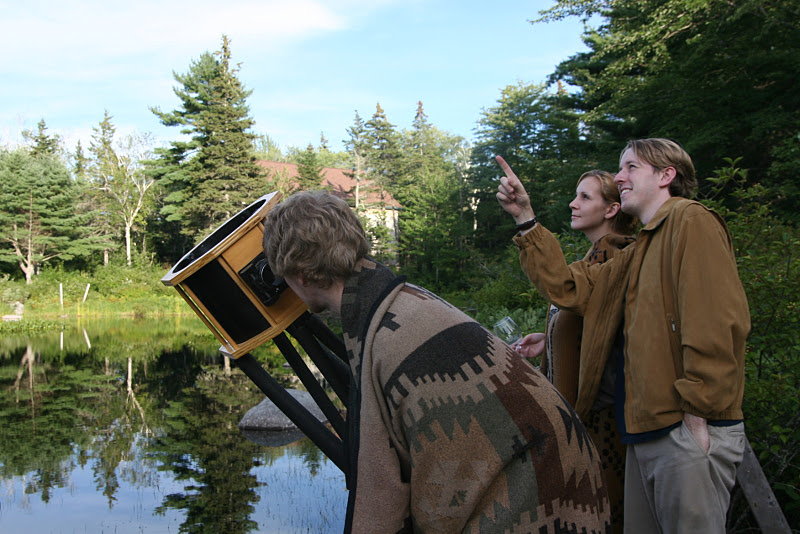Acadian Skies & Mi'kmaq Lands Starlight Tourist Destination and Preserve earns its second renewal.
It was the first destination in North America to receive a Starlight certification in 2014, plus double.
2024 / 07 / 03

When explorer Samuel de Champlain crossed the Atlantic and named the region of New France Acadie, or Acadia, he sailed the sea guided by the North Star and his astrolabe, conquering the "dark ocean" (mer des Ténèbres) by astronomical navigation. Today, more than four centuries later, you can still see the same clear skies and awe-inspiring stars that Champlain encountered at Cape Forchu in the 17th century.
With a vast, wild forest at its heart, Acadia and the Mi'kmaq Lands (named for the Aboriginal people) encompass the communities of Argyle, Clare and Yarmouth in southwestern Nova Scotia. This astro-tourism destination in Canada is an integral part of the Yarmouth & Acadian Shores tourism region.
Acadian Skies & Mi'kmaq Lands was also the first destination in North America to receive Starlight certification in 2014, and it is double certified as both a Starlight Reserve and a Starlight Tourist Destination. And it has a certified hotel, Trout Point Lodge.
Now, this dual certification as a Starlight Tourist Destination and Starlight Reserve for Acadian Skies & Mi'kmaq Lands has been revalidated for a second time. Proving that Nova Scotia's commitment to the night sky is as strong as ever.
 Credit: Acadian Skies & Mi'kmaq Lands
Credit: Acadian Skies & Mi'kmaq Lands
The area certified as an Acadian Skies & Mi'kmaq Lands Starlight Tourist Destination is the southwestern portion of the Island of Nova Scotia, specifically the area between the municipalities of Clare, Argyle and Yarmouth, excluding the City of Yarmouth. Within this territory, in the Tobeatic Wilderness Area - the largest of the Atlantic Maritime Provinces - is the area recognized as a Starlight Reserve; a nucleus where there is no source of light pollution within 100 kilometers, adjacent to the Kejimkujik National Park and Historic Site, a landscape protected for its biodiversity and, for years, for its night sky.
The region is characterized as an area rich in undisturbed glaciers and unique river systems that have served as refuges for numerous species.
Known as "Yarmouth & Acadian Shores" and "Acadia Bon Temps", this area was and still is the cradle of continuous settlement by the French Acadian culture, founder of the Canadian province of Nova Scotia. It is also home to the Mi'kmaq Aboriginal people, who have been closely associated with astronomy since time immemorial.
With the renewal of the Double Starlight seal, southwestern Nova Scotia continues to promote astronomical tourism, which allows it to take advantage of such a valuable resource as its night sky, a source of life for many species and a guarantee of environmental preservation, local culture and the development of a rural and long depressed area.